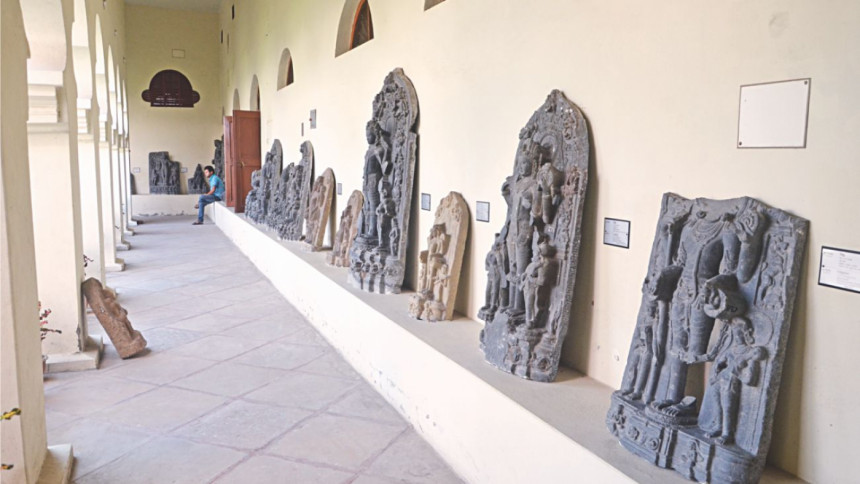Gallery
Prolific in relic riches, ever on the quest
The Varendra Research Museum today includes 11 galleries open to the public, with approximately 1150 distinct types of artifacts; the remaining specimens are preserved in 6 protected stores. The layout of galleries is as follows:
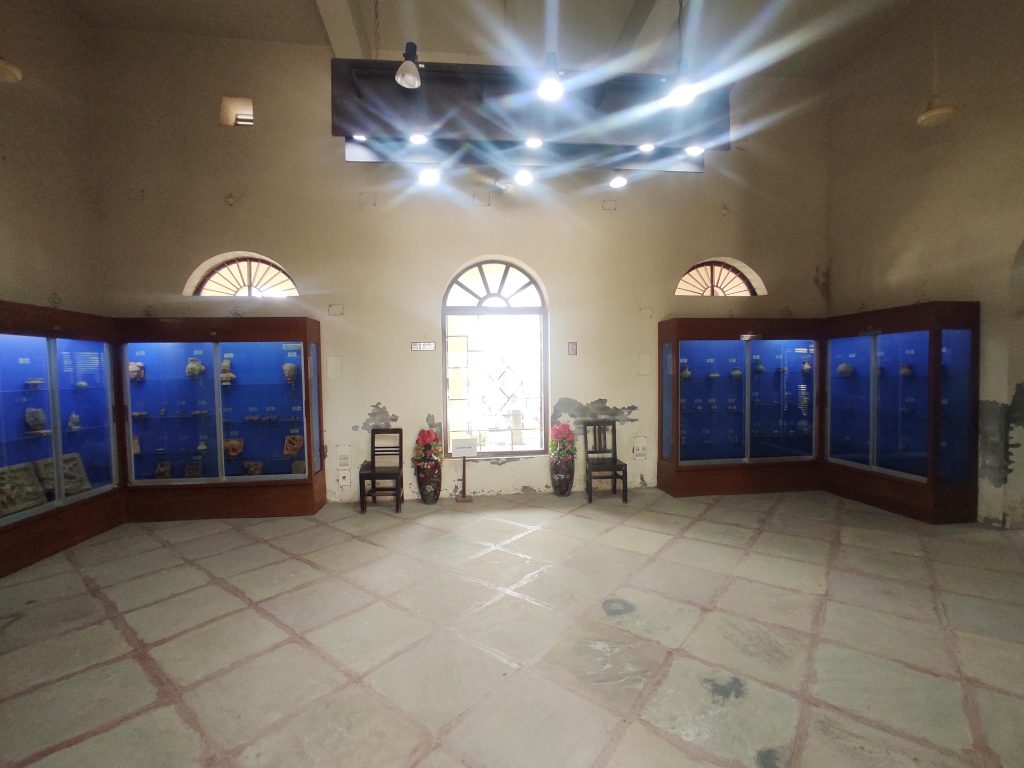
Gallery 1
187 earthenware objects in all, including Indus civilisation, Paharpur artefacts and terracotta figurines unearthed from different regions of Indo-Bangladesh. These are shown in 08 showcases.
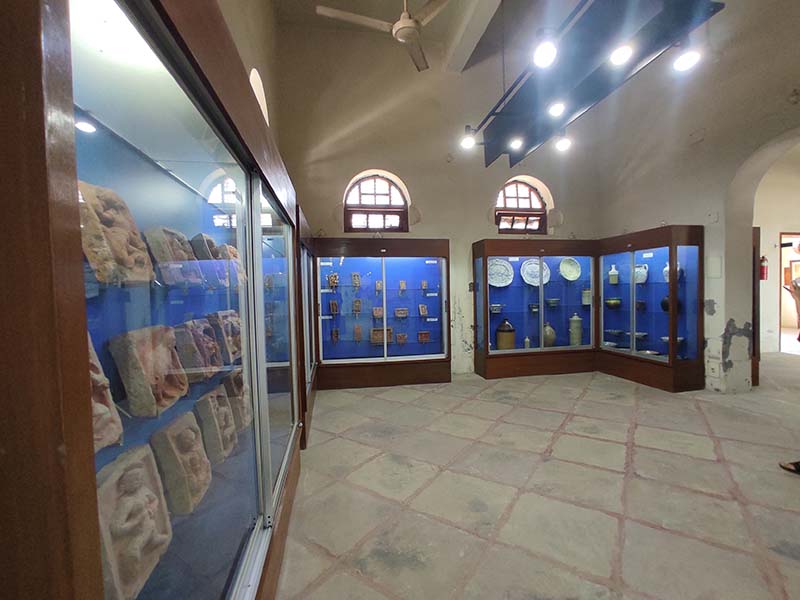
Gallery 2
A total of 110 exhibits are in 07 showcases. They are terracotta from Paharpur and various territories of undivided Bengal, sheen terracotta and glazed tiles from the Sultanate period, and various porcelain dishes from the 18th century.
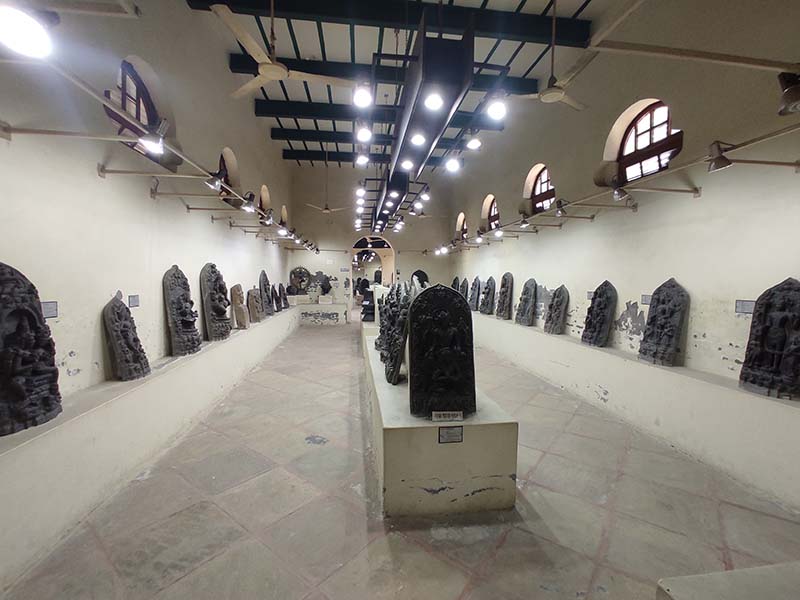
Gallery 3
The "Gallery of Brahmanical Gods and Goddesses" is located here.
All 43 instances of Hindu Brahmanical philosophy are essentially stone sculptures, with one exception of a South Indian bronze item.
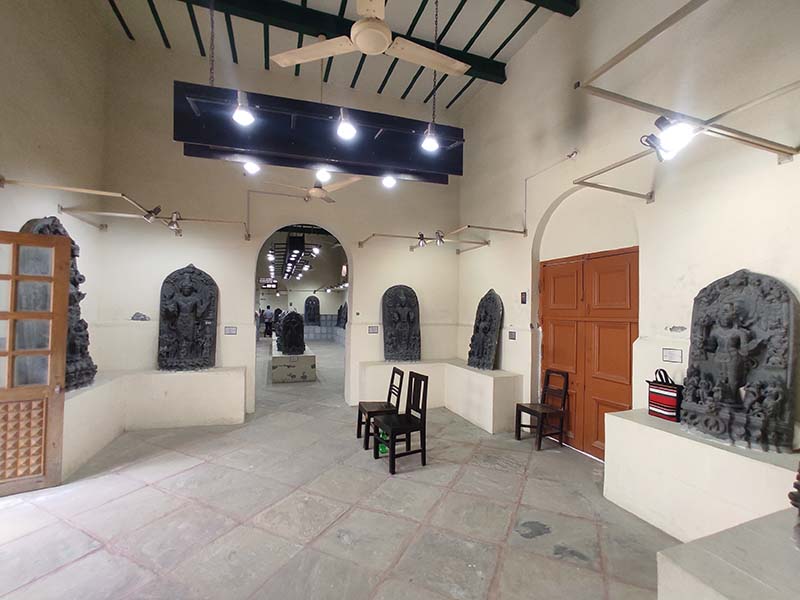
Gallery 4
The largest Sun statue in Bangladesh is the major feature of this exhibition, named "Surya Gallery." Eight sculptures of the Sun God are also on display.
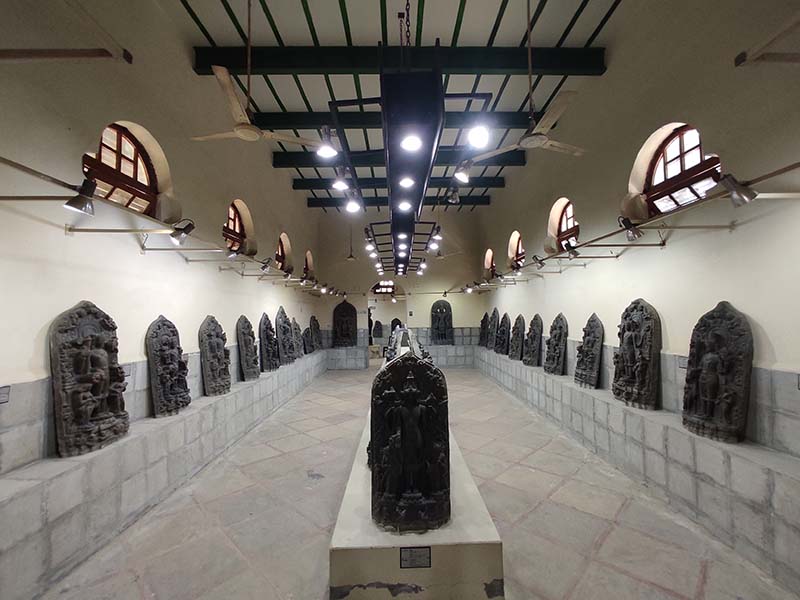
Gallery 5
This gallery is named as the "Vishnu Gallery". A total of 42 sculptures of Vishnu and his incarnations are displayed here.
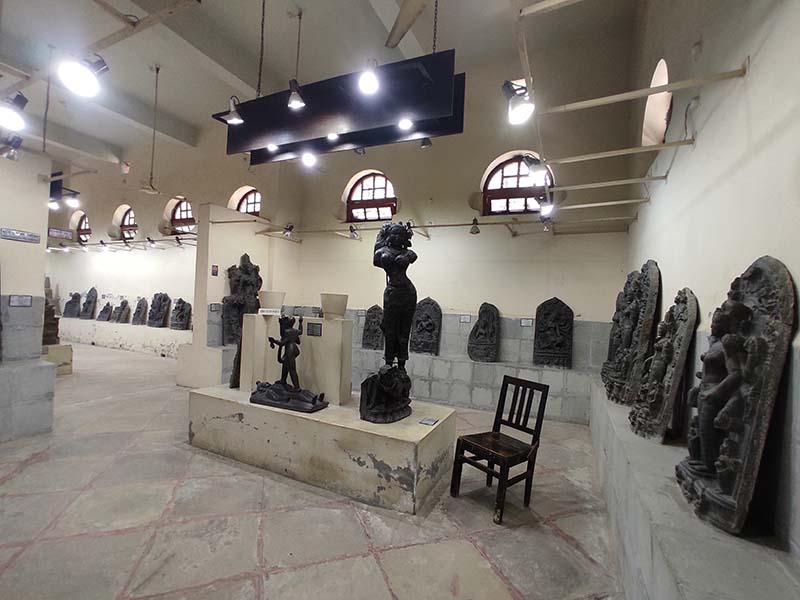
Gallery 6
This gallery, named the "Minor Goddess Gallery," contains a total of 21 specimens. Ardhanari Shiva, Ganga, Mother and Child, Parvati, Durga Mahishmardini, and others are among them.
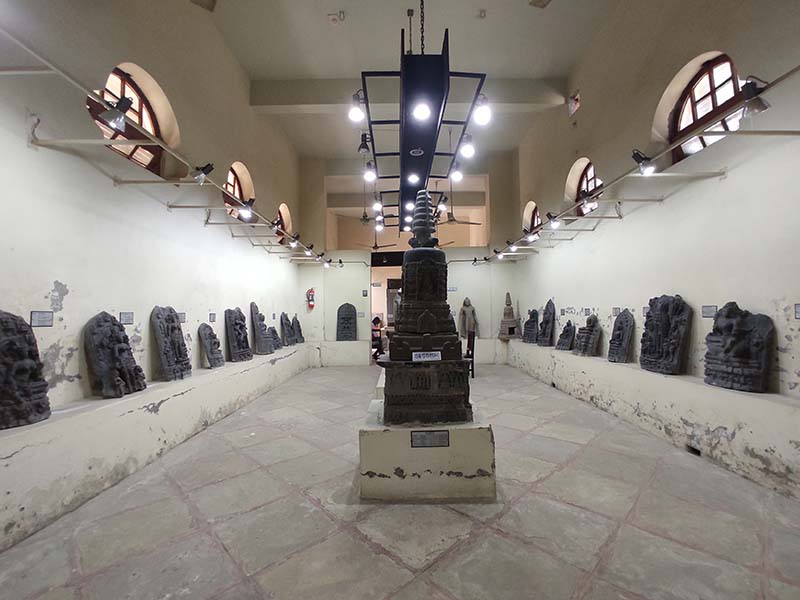
Gallery 7
The "Buddhist and Jain Gallery" exhibits features of Buddha, Adibuddha, Marichi, Tara, Khadirabani Tara, and Jaina Rishabhanatha, among its 43 classical artworks.
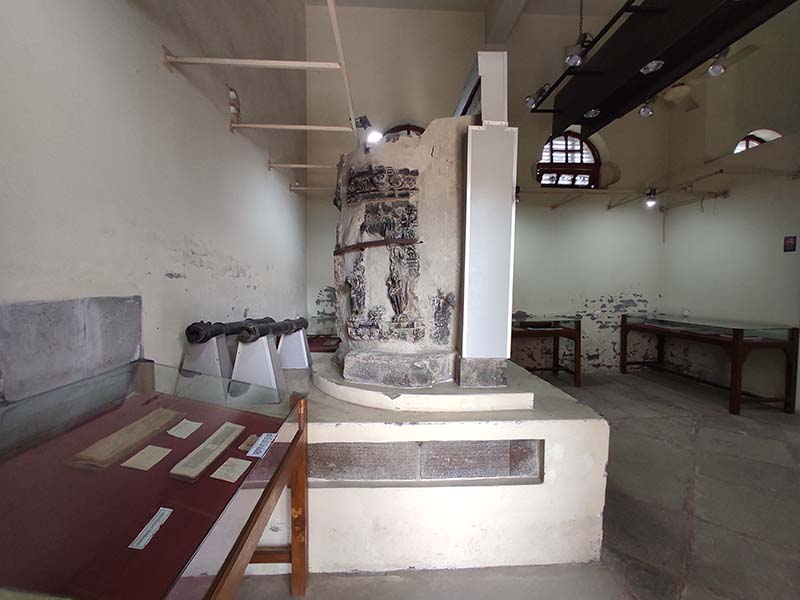
Gallery 8
Its main feature is an arch motif Mihrab created during the Sultanate period, with Muslim and Brahmanical cultures flourishing on the front and back respectively. Around 72 objects from diverse cultures including coins, manuscripts, and Sher-Shahi cannons are on show in the gallery.
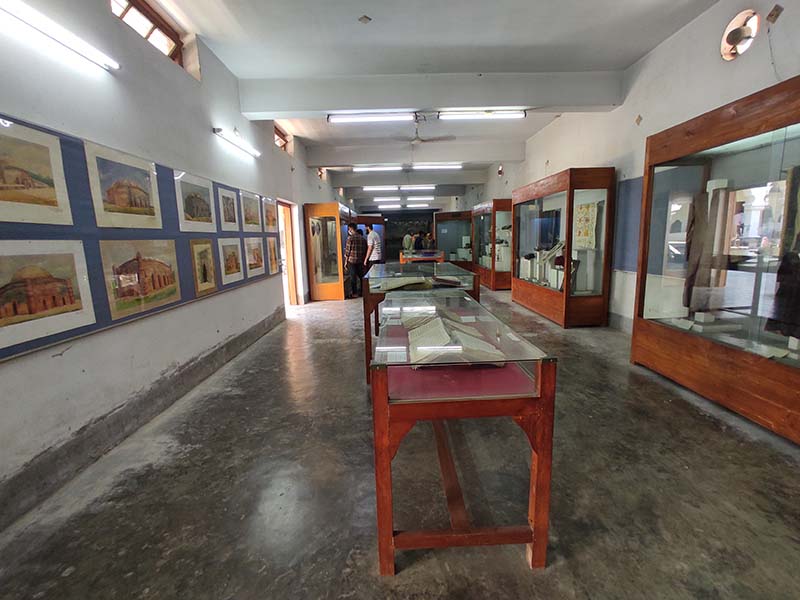
Gallery 9
The "Muslim Heritage Gallery," as it is known, exhibits important works from the eighteenth and nineteenth centuries, such as handwritten Holly Qur'ans, miniature images on ivory, Portuguese weapons, swords of various shapes, and so on. There are approximately 31 relics from the recent past, including a panel of different memorabilia belonging to Shaheed AHM Kamaruzzaman, one of Bangladesh's four national leaders. This gallery also includes Bangabandhu sheikh Mujibur Rahman's Centenary Memorial Memento (2021 CE) in one of the showcases.
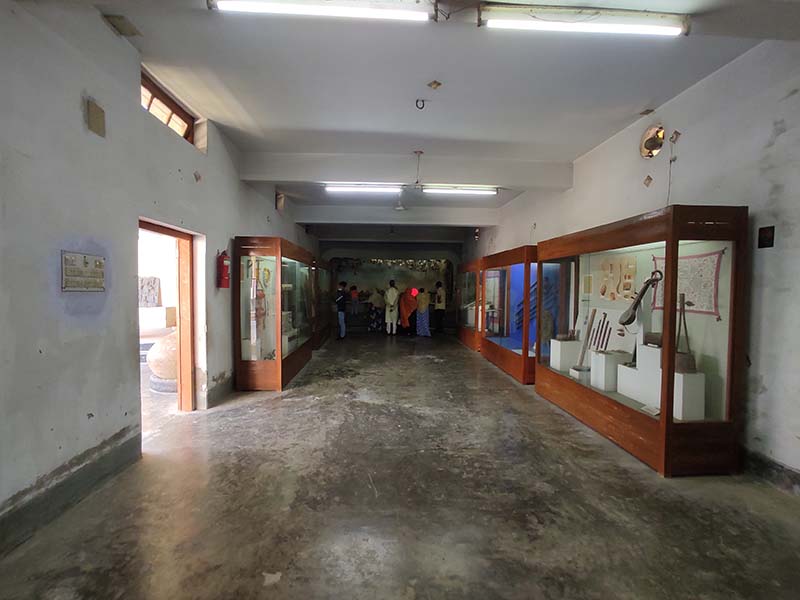
Gallery 10
The exhibit, titled "Traditional Bangladesh," features specimens used by six distinct ethnic groups in Bengal, particularly in the Varendra region. There are some mementos of the great Queen Rani Bhavani (Bhabani) of Natore is presented in a visually appealing manner using the Diorama approach. This gallery contains a total of 30 specimens.
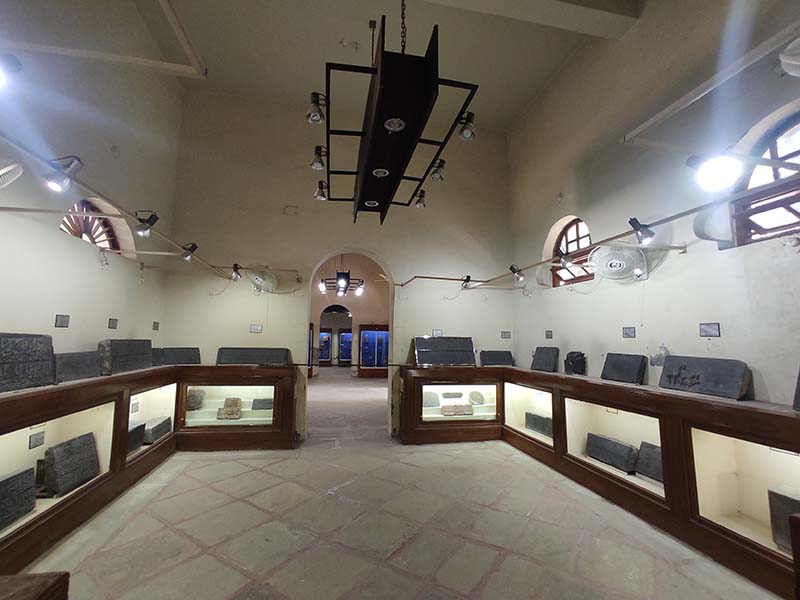
Gallery 11
This gallery is known as the "Inscription Gallery". There are a total of 37 stone and clay inscriptions written in Sanskrit, Ancient Bengali, Arabic and Persian. The main attractions of the gallery are the two stone inscriptions named after 'Mahipala the 1st' and 'Lakshmana Sen'.
In addition, the museum has a number of important artefacts in the inner verandah and courtyard.


